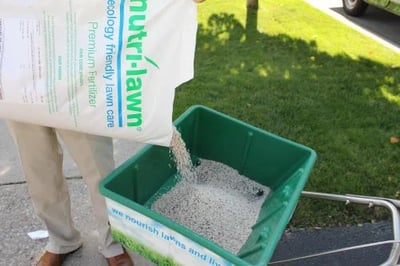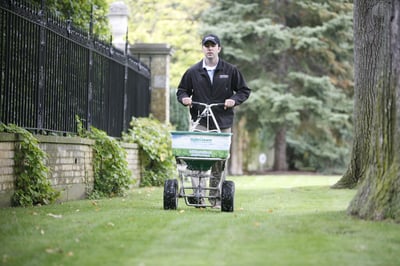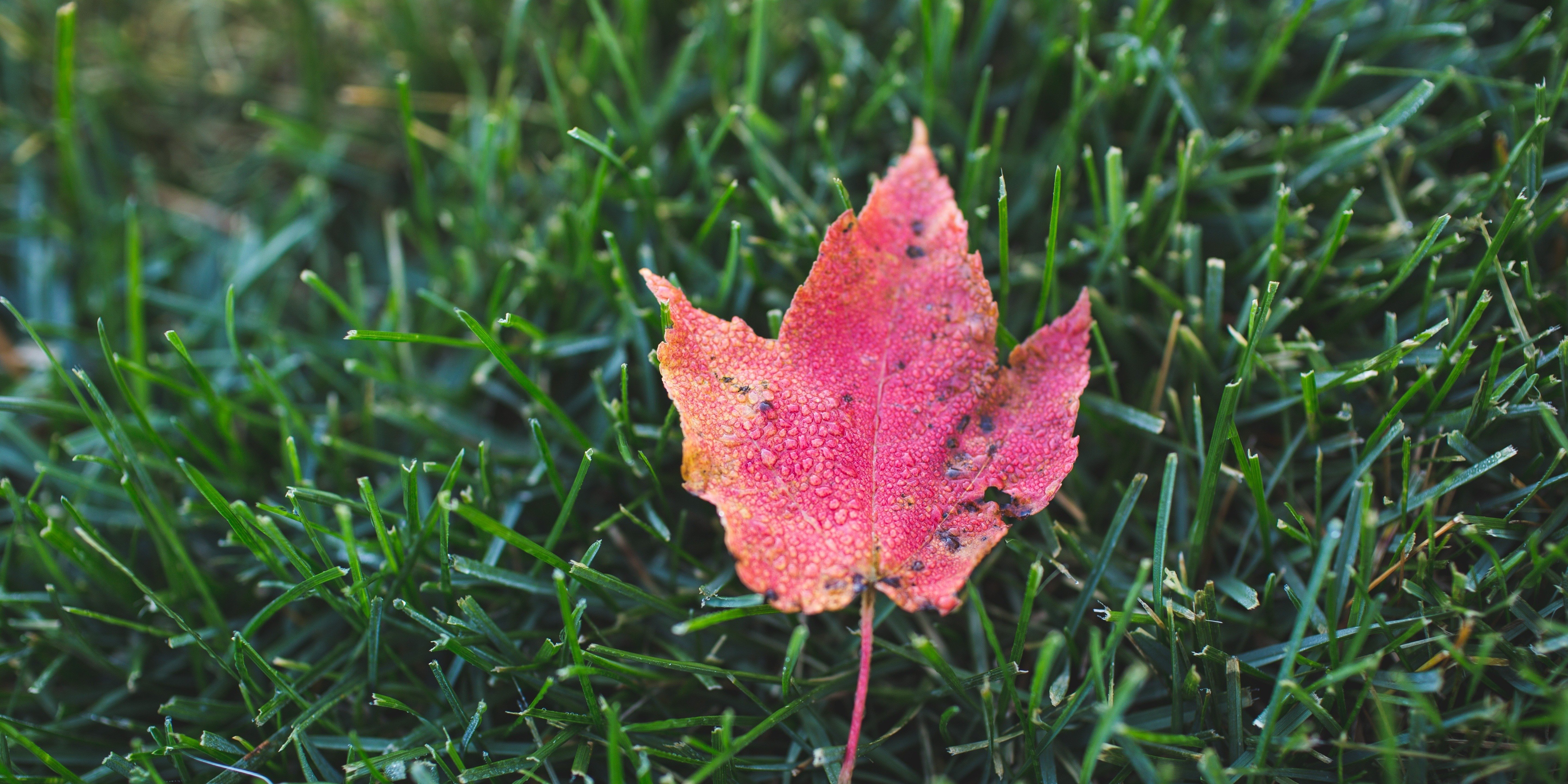As the vibrant colors of summer fade and the crisp air of autumn sets in, it’s time to shift our focus towards preparing our lawns for the winter ahead. Fall fertilization plays a crucial role in this process, providing the nutrients your lawn needs to build strong roots, resist winter stress, and emerge lush and vibrant come springtime.

Why Fall Fertilization is Essential
- Root Strengthening: Fall fertilization promotes robust root development. As temperatures cool, grass plants shift their energy from above-ground growth to root growth. By providing essential nutrients now, you’re setting the foundation for a healthier, more resilient lawn.
- Winter Resilience: A well-fertilized lawn is better equipped to withstand the challenges of winter. It helps grass resist disease, drought, and cold temperatures, ensuring they bounce back vigorously in the spring.
- Spring Green-Up: Come spring, a properly fertilized lawn will awaken with lush green growth. This early advantage over unfertilized lawns can make a noticeable difference in the overall health and appearance of your turf.
When to Apply Fall Fertilizer
The ideal time for fall fertilization depends on various factors including your location, grass type, and local climate conditions. In most regions, the window for fall fertilization typically ranges from late August to early November. Late fall application timing should be made between mid-October and mid-November for most areas. This timing ensures winter survival and early spring green-up.

Choosing the Right Fertilizer
Fertilizer is categorized by its NPK formula, which is represented by three numbers, such as the common 5-10-5. The numbers represent the ratio of the active ingredients in the fertilizer:
- Nitrogen (N): Promotes lawn blade and foliage growth.
- Phosphorus (P): Helps root growth.
- Potassium (K): Promotes cell function and absorption of trace elements.
For fall, a fertilizer with a higher nitrogen content is typically recommended to support root growth and prepare the lawn for winter.
Application Tips
- Measure Accurately: Ensure you measure the total treatment area and apply the required amount of fertilizer. Over-fertilizing can create problems such as burning and excessive growth.
- Use the Right Equipment: A rotary broadcast spreader is effective for evenly distributing fertilizer across the lawn.
- Timing: Apply fertilizer when the lawn has stopped growing but is still green, and the ground is not frozen.





